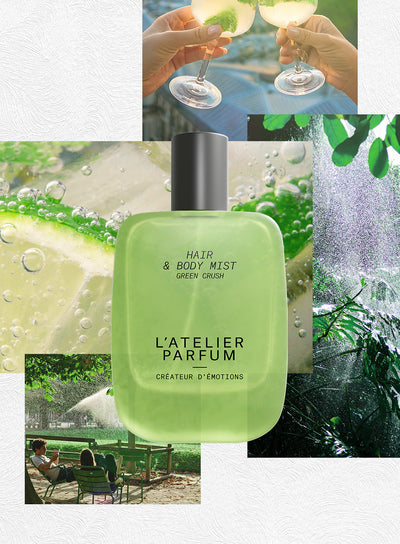- Ingrédients, Santal
- L'Atelier Parfum
Sandalwood: a fragrance of warmth and serenity

What is Sandalwood?
Sandalwood, scientifically known as Santalum, belongs to the Santalaceae botanical family. Its name comes from the Sanskrit word "chandana," meaning "pleasant to the senses." This definition perfectly captures the essence of sandalwood, which has been valued for centuries for its rich, creamy, and woody fragrance. Highly prized in perfumery, it brings depth, warmth, and sophistication to olfactory compositions.
The History of Sandalwood: A Sacred Heritage
Nicknamed the "wood of the gods," sandalwood has been revered for millennia. Ancient civilizations used it in spiritual rituals, meditation, and traditional medicine, attributing it soothing and sacred properties. Its importance in Hindu, Buddhist, and other cultural traditions makes it a key ingredient for creating a serene and meditative atmosphere.
Origins of Sandalwood
Main producing countries:
Sandalwood Cultivation: A Precious Resource
Sandalwood thrives in tropical and subtropical climates, requiring:
Sandalwood, scientifically known as Santalum, belongs to the Santalaceae botanical family. Its name comes from the Sanskrit word "chandana," meaning "pleasant to the senses." This definition perfectly captures the essence of sandalwood, which has been valued for centuries for its rich, creamy, and woody fragrance. Highly prized in perfumery, it brings depth, warmth, and sophistication to olfactory compositions.
The History of Sandalwood: A Sacred Heritage
Nicknamed the "wood of the gods," sandalwood has been revered for millennia. Ancient civilizations used it in spiritual rituals, meditation, and traditional medicine, attributing it soothing and sacred properties. Its importance in Hindu, Buddhist, and other cultural traditions makes it a key ingredient for creating a serene and meditative atmosphere.
Origins of Sandalwood
Main producing countries:
- India – Renowned for its Mysore sandalwood, the most precious in the world
- Australia & Indonesia – Major producers of high-quality sandalwood
- Sri Lanka, Pacific Islands & Africa – Regions offering unique olfactory profiles
Sandalwood Cultivation: A Precious Resource
Sandalwood thrives in tropical and subtropical climates, requiring:
- Nutrient-rich, well-drained soil
- Constant irrigation and pest management
- 15 to 25 years of growth before harvest
- India (Mysore, Karnataka) – The world's leading producer of Indian sandalwood
- Australia & Indonesia – Known for their sustainable cultivation
- Sri Lanka, Fiji, Vanuatu, Malaysia, Tanzania, Kenya – With distinct olfactory variations
Harvesting is a meticulous process, as only the heartwood (the duramen) contains the precious aromatic molecules. Once the trees reach maturity, the wood is carefully extracted and processed to preserve its rich, creamy, and woody essence.
Sandalwood in Perfumery: A Timeless and Versatile Note
Extracting sandalwood for perfumery involves several steps:
- Drying the logs
- Reducing humidity to amplify the olfactory profile
- Extracting the heartwood – The richest source of aroma
- Steam distillation – Capturing the warm, woody essence of sandalwood
Olfactory Profile of Sandalwood:
- Warm & Woody – Deep, rich, and soothing
- Creamy & Sweet – A velvety, almost milky scent
- Exotic & Sensual – An instantly recognizable and lingering fragrance
Perfume Combinations:
- Floral (Rose, Ylang-Ylang, Magnolia) – Brings warmth and depth to delicate florals
- Amber & Spices – Enhances the sensuality of oriental compositions
- Citrus & Aromatic Herbs – Offers a fresh yet structured contrast
- Gourmet Notes – Adds a touch Creamy and slightly almondy
Sandalwood is an essential base in many luxury fragrances, renowned for its ability to blend seamlessly with various notes while providing exceptional staying power on the skin.
Did you know?
Beyond perfumery, sandalwood is renowned for its therapeutic benefits:
Relaxation & Meditation – Soothes the mind and promotes emotional balance
Skin & Respiratory Health – Antiseptic and anti-inflammatory properties
Aromatherapy – Improves mental clarity and inner well-being
Sandalwood remains one of the most prized and revered ingredients, combining timeless elegance, spirituality, and comforting warmth.
Iconic Sandalwood Fragrances:
Santal 33 – Le Labo
Samsara – Guerlain
Tam Dao – Diptyque
Bois des Îles – Chanel
Sandalo – Etro





